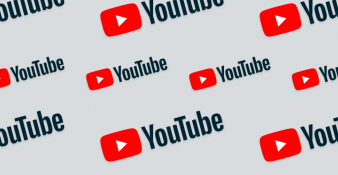6 marketing mistakes that businesses make

While it's certainly true that digital marketing is one of the most powerful outreach opportunities that brands have had in a generation, it is possible to "get things wrong" if you're not careful. There was a time where simply sending collateral digitally was enough to stand out from your competitors, instantly separating your business from the reams of junk mail people get in a day.
Rest assured, that time is over.
There are a number of key marketing design mistakes that businesses are somehow still making in the modern era - this despite the fact that you'd think some of the larger brands, in particular, would have worked these types of "kinks" out of their system by now. But as the old saying goes, "the first step to recovery is admitting you have a problem." Once you know more about these common design mistakes, you can put yourself in the best position to avoid them - thus strengthening the relationship you are building with your clients as far as it can possibly go.

Visual overload
Yes, visuals are an important part of your marketing collateral - but this is one of those situations where it really is possible to have "too much of a good thing." It's also a lot easier than you probably realize.
Just because you're telling a story visually (or are representing certain points with pictures instead of words) doesn't mean you can lose sight of the artistry and craft behind what you're doing. You still need to think about the most straightforward, efficient way to express an idea - that doesn't change just because you move out of the realm of text and into the world of pictures.
So when you sit down with an infographic maker like Visme (which I founded), you need to resist the urge to take the "everything and the kitchen sink" approach just because it's suddenly so easy to do so. If you look at your finished product and think "man, there is a lot going on here..." the chances are that your audience members are going to feel that way, too. Scale back as much as possible and only include the absolute bare minimum that you need to convey whatever it is you're trying to say in your marketing. If you risk a finished product getting too bogged down by an overwhelming visual field, the entire affair will "collapse under its own weight," so to speak.
Over stylization
Along the same lines, we have the idea of over stylizing - meaning that you get so concerned with the "flashier" parts of the design that you slowly begin to detract from the larger whole those elements are meant to contribute to.
You see this kind of thing a lot with young students who are just discovering software like PowerPoint for the first time. Their presentations tend to be filled with flashy transitions, animations, and every font under the sun - but none of it is in service of the thesis they're supposed to be presenting to the group.
Again, marketing design is all about bringing the best of style and substance together - but they both need to be two sides of the same coin. When you begin work on your next piece of collateral with a presentation maker, don't obsess over the design to the point where your actual marketing message is getting lost in all the noise.
If you have a ten slide presentation, for example, go through and do a pass where you focus on JUST the text. Make sure that the message is as clear and as concise as it can possibly be and once you have that up and running, then focus on adding in all that visual flavor that will complement and empower the words, not distract from them.
Once you're absolutely certain that you're not going to fall into these traps, you can begin to think about the steps that come next. Influencer marketing by way of a service like Respona, pushing collateral out to your social media channels, etc. But don't put the cart before the horse, so to speak. Even the most powerful influencer who your audience members love ultimately won't be able to help you if the content just isn't compelling on its own or if you've continued to make design mistakes like these.
But provided you've kept tips like these in mind, you'll be in an excellent position to craft better and more compelling content - and your audience won't be able to keep themselves from noticing.
Moving past the design mistakes...
Lack of research and testing
Market research and testing are crucial because they can determine the performance of each of your marketing efforts. They take the guesswork out of what your potential customer or client wants from you. Always make sure you've done your due diligence when it comes to testing different your offers, prices, and packages, then get the input of your customers to see how they react to each.
Failing to re-target
Keep in mind that 80 percent of your business comes from existing customers and 20 percent is the result of new customers you've attracted. Failing to resell to your current customer base could have a detrimental effect on your profits. It will cost you five times the expense to sell to a new customer than to sell to an existing customer.
Focusing on one-sided content creation
Content marketing is set to become a $50 billion industry by 2019, according to PQ Media’s Global Forecast. Virtually every marketer is spending more and more on content - but spending a major chunk of your marketing budget on content creation won't necessarily give you the most bang for your buck.
If you want to get better results from content marketing this year, be sure to utilize your user-generated content.
Blowing the marketing budget on acquisition
Spending your marketing dollars to acquire new customers at scale is a recipe for disaster. Did you know that only 2% of web traffic converts on the first visit? No matter how much effort you're putting in bringing people to your site, most will come and go in an instant, and you won't be able to convert them even if your site is well optimized. Having said that, I'm not suggesting marketers should stop spending on the acquisition. Instead, they should be spending a significant portion of their marketing budget on stocking up their repurchase rates, too.
Why? The cost of acquiring new customers is dramatically high in comparison to retaining old customers. It costs 6–7x more to acquire a new customer than retain an existing one. Also, the probability of selling to an existing customer is 60 – 70%, while the probability of selling to a new prospect is only 5-20%.
The path to profitable growth is to focus on acquisition & retention at the same time.
Got any questions? Please let me know in the comment section below.













